How much do you know about Sakamoto Ryoma? Sakamoto Ryoma played a significant role during the Bakumatsu period and was instrumental in Japan’s modernization, a story many people may be familiar with through novels and dramas. However, do you know exactly what Sakamoto Ryoma did during the Bakumatsu period? Additionally, while Ryoma was ultimately assassinated, the identity of his assassin remains unknown to this day. In this article, we will introduce you to the lesser-known aspects of the Bakumatsu hero, Sakamoto Ryoma.
What Did Sakamoto Ryoma Do?
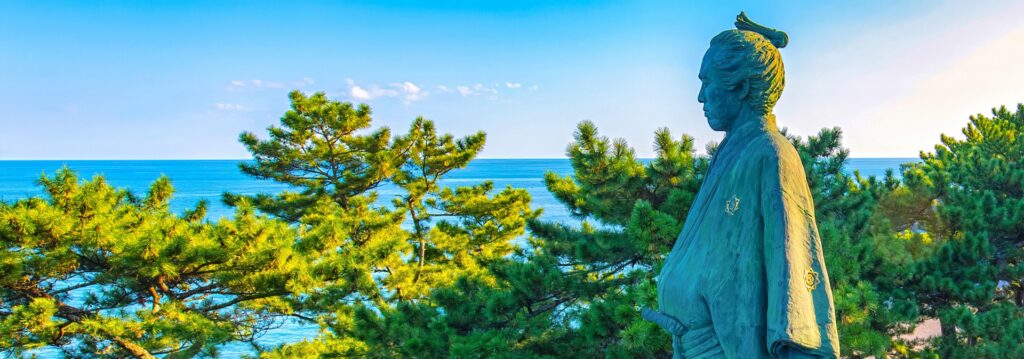
Sakamoto Ryoma was a patriot who played a key role during the tumultuous Bakumatsu period in Japan, contributing significantly to the overthrow of the Tokugawa Shogunate and the modernization of Japan. Born in 1835 in what is now Kochi Prefecture, Ryoma sought freedom and equality from a young age, questioning the rigid social hierarchy of the Bakumatsu society. At the age of 18, while studying in Edo (now Tokyo), he witnessed the arrival of Commodore Perry’s Black Ships and realized that the current shogunate could not compete on the world stage. He deeply pondered how Japan should respond to foreign threats and felt the urgent need for Japan to open up and modernize.
Breaking free from the constraints of his domain, Ryoma went to Edo, where he studied under Katsu Kaishu. Under Katsu’s guidance, he learned not only ship navigation techniques but also Western politics and economics. Utilizing this knowledge, he established Japan’s first modern shipping company, the Kaientai, which improved the efficiency of information and goods distribution within the country.
One of his most influential achievements was uniting the powerful but opposing Satsuma and Choshu domains, leading to the Taisei Hokan (Restoration of Imperial Rule). This event marked the end of the 260-year rule of the shogunate, transferring power back to the Emperor and paving the way for the Meiji Restoration. However, his revolutionary activities made him a target, and he was assassinated in 1867 at the young age of 32.
Despite his short life, Sakamoto Ryoma’s impact on Japanese history is immense. His “Kaientai Constitution” espoused the principle that “all people are born equal,” a philosophy that continues to influence modern Japanese society. Sakamoto Ryoma can be regarded as a true revolutionary who opened the door for Japan to begin its journey as a modern nation.
A Simple Timeline of Sakamoto Ryoma’s Life
Let’s take a look at a simple chronological timeline to see the specific life events of Sakamoto Ryoma.
| Year | Event |
| 1835 | Born as the second son of a low-ranking samurai family in the Tosa Domain. |
| 1853 | Self-funded study trip to Edo for a year to train in swordsmanship, became a disciple at the Chiba Dojo of the Hokushin Ittoryu under Chiba Sadakichi. |
| 1853 | Commodore Perry, sent by the United States, arrived off the coast of Uraga with the Black Ships, demanding that the Edo Shogunate open Japan to foreign trade. |
| 1856 | Returned to Edo for further swordsmanship training. |
| 1862 | Left the Tosa Domain and became a disciple of Katsu Kaishu. |
| 1863 | Appointed head of the Naval Training Center established by Katsu Kaishu in Kobe. |
| 1864 | Met his lifelong partner, Oryo. |
| 1864 | Introduced to Saigo Takamori by Katsu Kaishu. |
| 1865 | Formed the Kaientai in Nagasaki with funding from the Satsuma Domain. |
| 1866 | Facilitated the Satsuma-Choshu Alliance. |
| 1867 | Co-wrote the Eight Proposals While Aboard Ship with Goto Shojiro, who then submitted them to the Shogunate. |
| 1867 | Taisei Hokan (Restoration of Imperial Rule) was implemented. |
| 1867 | Assassinated at Omiya in Kyoto while conversing with Nakaoka Shintaro. |
1853: The arrival of the Black Ships.
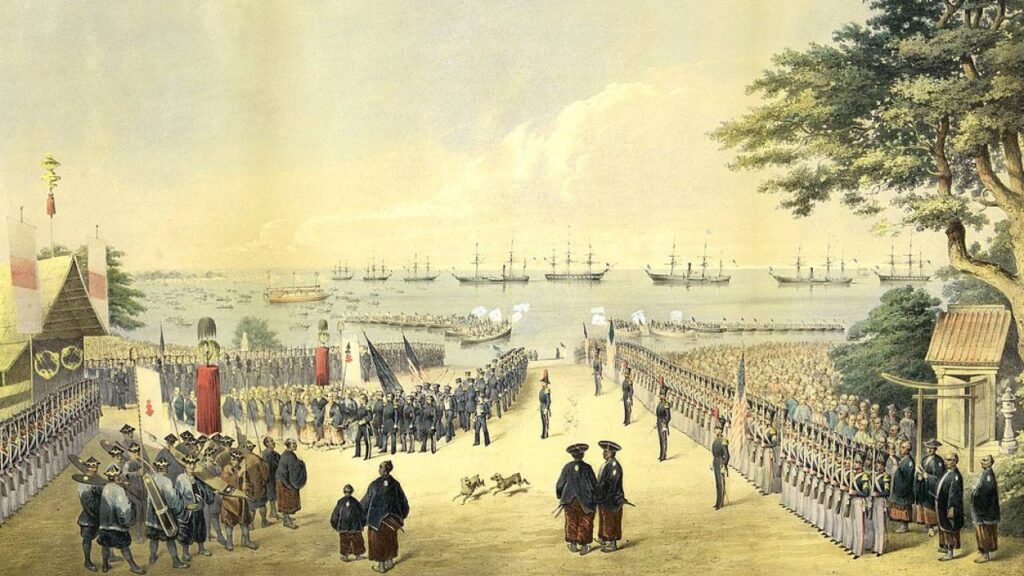
From a young age, Sakamoto Ryoma showed remarkable talent in swordsmanship. At the age of 18, he traveled to Edo (present-day Tokyo) to train in swordsmanship and became a disciple at the Chiba Dojo of the Hokushin Ittoryu under Chiba Sadakichi. While honing his sword skills in Edo, Ryoma was assigned to coastal defense in Shinagawa when Commodore Perry’s Black Ships arrived in Uraga. Witnessing the modernized American ships, Ryoma realized that the current Shogunate could not compete with the world and that Japan was lagging in modernization.
1862: Leaving the Tosa Domain and Becoming a Disciple of Katsu Kaishu
Ryoma’s departure from the Tosa Domain was a major turning point in his life and an important event in Japanese history. In 1861, at the age of 27, Ryoma joined the Tosa Loyalist Party led by his relative and close friend, Takechi Zuizan. This political group aimed to reform the feudal system and pledge loyalty to the Emperor in response to the foreign threat faced by Japan during the Bakumatsu period.
In 1862, carrying a secret letter from Takechi, Ryoma visited Hagi in Yamaguchi Prefecture and met with the loyalist Kusaka Genzui. Inspired by Kusaka’s belief that commoners with ambition should lead the new era, rather than daimyo or courtiers, Ryoma returned to Tosa and made a crucial decision. In March 1862, he left his family and domain without permission, resolving to head to Edo. This departure was more than just a violation of domain rules; for Ryoma, it was a necessary step towards free political activity and the pursuit of his vision for Japan’s future, as evidenced by his subsequent actions.
1864: Meeting Saigo Takamori through Katsu Kaishu’s Introduction
After leaving the Tosa Domain, Ryoma’s activities expanded significantly. In Edo, he became a disciple of Katsu Kaishu, a key figure of the Bakumatsu period, and deepened his knowledge and skills in naval matters under Katsu’s guidance. When Katsu was entrusted with coastal defense around Osaka Bay, he took responsibility for establishing a Naval Training Center in Kobe. Ryoma accompanied Katsu to Kobe, joined his private school attached to the Naval Training Center, and trained rigorously, aiming to modernize Japan’s navy.
Ryoma’s activities went beyond technical training; he also became deeply involved in the political scene of the Bakumatsu period. In August 1864, he met another key figure, Saigo Takamori, as Katsu’s envoy. This meeting allowed Ryoma to assess Saigo’s character, and his words recorded in “Hikawa Seiwa” reflect his sharp insight into Saigo’s potential influence. Ryoma reported his impressions to Katsu, who highly valued Ryoma’s discernment.
1865: Formation of the Kaientai
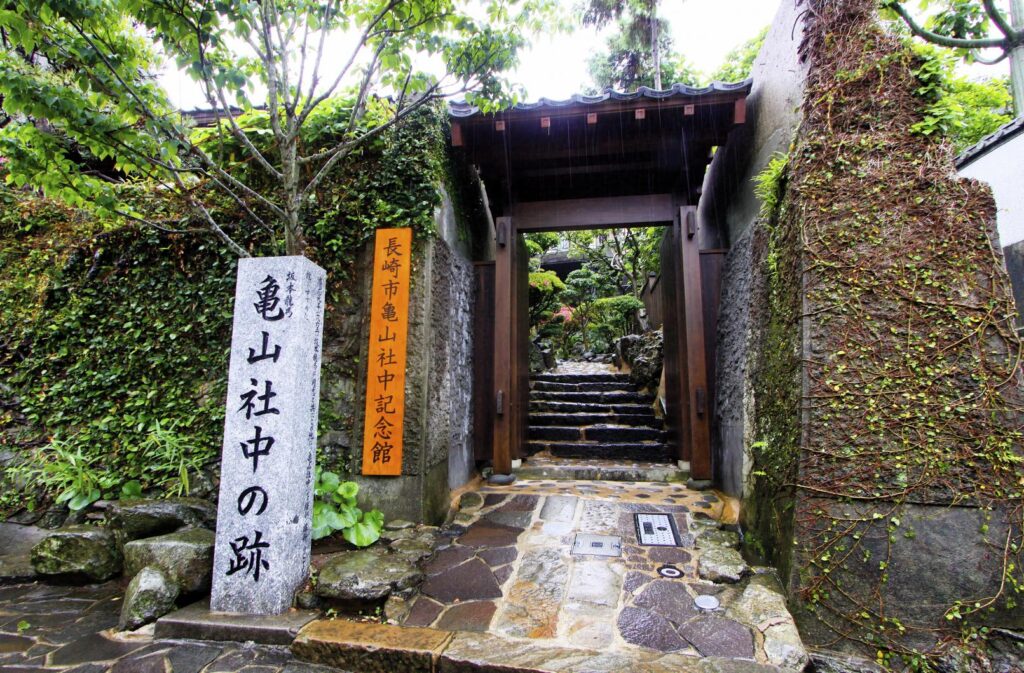
In 1865, Sakamoto Ryoma established Japan’s first joint-stock company, the Kaientai. This company was formed with the support of the Satsuma Domain and the wealthy merchant Kozone family of Nagasaki. Ryoma and his comrades were instrumental in its creation.
The events leading up to the establishment of the Kaientai were heavily influenced by incidents in 1864. On June 5, the Ikedaya Incident occurred in Kyoto, where the Shinsengumi suppressed many Sonnō Jōi (Revere the Emperor, Expel the Barbarians) loyalists. Students from the Naval Training Center established by Katsu Kaishu were also involved in this incident, angering the Shogunate. Additionally, the students participated in the Forbidden Gate Incident in July, leading to Katsu being recalled to Edo and the closure of the Naval Training Center and Katsu’s private school.
As a result of these events, many ronin, including Ryoma, were left without a place to go. Undeterred, they succeeded in founding the Kaientai in Nagasaki in 1865 under the protection of the Satsuma Domain. The Kaientai functioned both as a trading company and a political organization, engaging in activities such as procuring weapons and supplies domestically and internationally, transporting goods, and conducting maritime training, all while aiming to overthrow the Tokugawa Shogunate.
Incidentally, Iwasaki Yataro, the founder of the Mitsubishi conglomerate, was also involved in the formation of the Kaientai. Iwasaki, like Ryoma, was from the Tosa Domain and was one year older. They had been friends since childhood and shared progressive ideas, collaborating on new initiatives like the Kaientai.
1866: Ryoma facilitated the Satsuma-Choshu Alliance
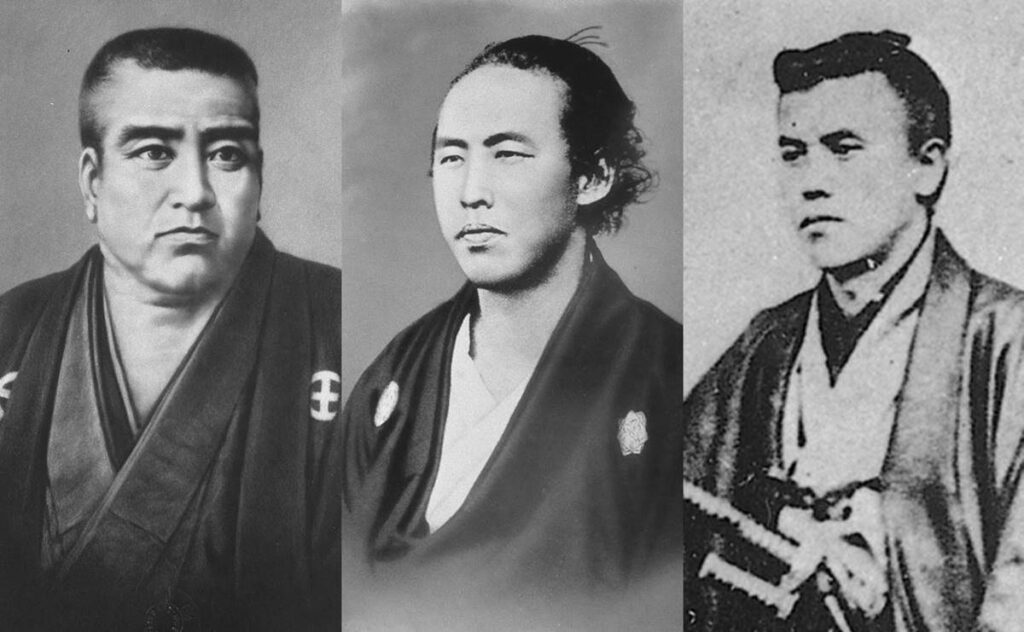
The Satsuma-Choshu Alliance was a crucial alliance formed during Japan’s Bakumatsu period, with the aim of overthrowing the Tokugawa Shogunate. This alliance was facilitated by Sakamoto Ryoma, who brokered the relationship between the Satsuma and Choshu domains, both of which harbored animosity towards the Shogunate.
At the time, the Choshu domain was engaged in the sonnō jōi (revere the Emperor, expel the barbarians) movement but found itself isolated both domestically and internationally due to events like the August 18 Coup and the Shimonoseki War. The Shogunate regarded Choshu as a rebel domain. Meanwhile, the Satsuma domain, after the Satsuma-British War, faced tensions not only with foreign powers but also with the Shogunate.
Sakamoto Ryoma believed that the Satsuma domain, which was already leaning towards anti-Shogunate sentiment, and the Choshu domain, which had suffered severe setbacks from the Shogunate, should join forces. This idea gained the support of Saigo Takamori, a key figure in the Satsuma domain, accelerating efforts towards its realization.
In May 1865, Ryoma, along with Ito Hirobumi and Inoue Kaoru, traveled to Nagasaki to bring representatives from the Satsuma and Choshu domains together. There, Ryoma promised to supply the Choshu domain with warships and guns, and formulated a plan for both domains to jointly confront the Shogunate. In September of the same year, the Shogunate, having learned of Choshu’s inclination towards overthrowing the regime, began preparations for the Second Choshu Expedition. In response, Satsuma domain leaders like Okubo Toshimichi took a cautious stance. Okubo criticized the imperial edict, stating that “an unjust edict is not an edict,” thus opposing the Shogunate’s plan.
Amidst these political maneuvers, an important meeting took place in January 1866 at the residence of Komatsu Tatewaki, where the Satsuma-Choshu Alliance was formally concluded. This alliance brought significant benefits to both domains. For the Satsuma domain, the alliance meant gaining a strong ally against the Shogunate and leveraging Choshu’s military strength to prevent a decline in national power. For the Choshu domain, the alliance provided access to necessary weapons and supplies through Satsuma, thus breaking their isolation.
By connecting key figures in the anti-Shogunate movement, Sakamoto Ryoma became a marked man, recognized as a dangerous individual by the Shogunate.
1867: Senchu Hassaku and Taisei Hokan
In June 1867, as the Satsuma and Choshu domains began contemplating the overthrow of the shogunate by force, Ryoma sought a peaceful method for this transformation. To concretize his ideas, he met with Goto Shojiro aboard the Tosa Domain ship “Yugao” and verbally proposed eight strategies to return governance to the Imperial Court. These strategies later became known as the “Senchu Hassaku,” and their contents are as follows:
Senchu Hassaku
- 1. The government authority should be returned to the Imperial Court, and all decrees should be issued by the court.
- 2. A deliberative assembly with upper and lower houses should be established, and members should be appointed to participate in important state affairs, which should be decided by public deliberation.
- 3. Talented court nobles, feudal lords, and people of merit from all over the country should be appointed as advisors, awarded with official ranks and titles, and the existing nominal positions without real duties should be abolished.
- 4. Diplomatic relations with foreign countries should be widely adopted through public discussion, and new appropriate treaties should be established.
- 5. The ancient codes and regulations should be reviewed, and a new, eternal constitution should be formulated.
- 6. The navy should be expanded.
- 7. Imperial guards should be established to protect the capital.
- 8. A monetary system comparable to that of foreign countries should be established.
Senchu Hassaku proposed that the Tokugawa Shogunate voluntarily return governance to the Emperor, thus avoiding potential conflicts between the Shogunate and the anti-Shogunate factions and facilitating a peaceful transfer of power. This plan was conveyed to Tokugawa Yoshinobu through Goto Shojiro, and Yoshinobu accepted the proposal.
On October 14, 1867, Tokugawa Yoshinobu submitted a petition for Taisei Hokan (the restoration of imperial rule) to the Imperial Court. This action marked the end of approximately 700 years of samurai rule in Japan and the beginning of a new era.
1867: Assassination at Omiya
About a month after the Shogunate’s collapse due to the Taisei Hokan, Sakamoto Ryoma was assassinated at Omiya in Kyoto, along with his ally Nakaoka Shintaro. The identity of the assailants remains unknown. The loss of Sakamoto Ryoma at a time when Japan was on the verge of reformation was a shocking event for the Satsuma and Choshu domains, the main forces behind the anti-Shogunate movement. It is said that Sakamoto Ryoma and Nakaoka Shintaro were discussing Japan’s future over drinks at Omiya when they were suddenly attacked and killed. Despite his significant contributions during the tumultuous Bakumatsu period, Sakamoto Ryoma’s life was tragically cut short at the age of 32.
Who Killed Sakamoto Ryoma?
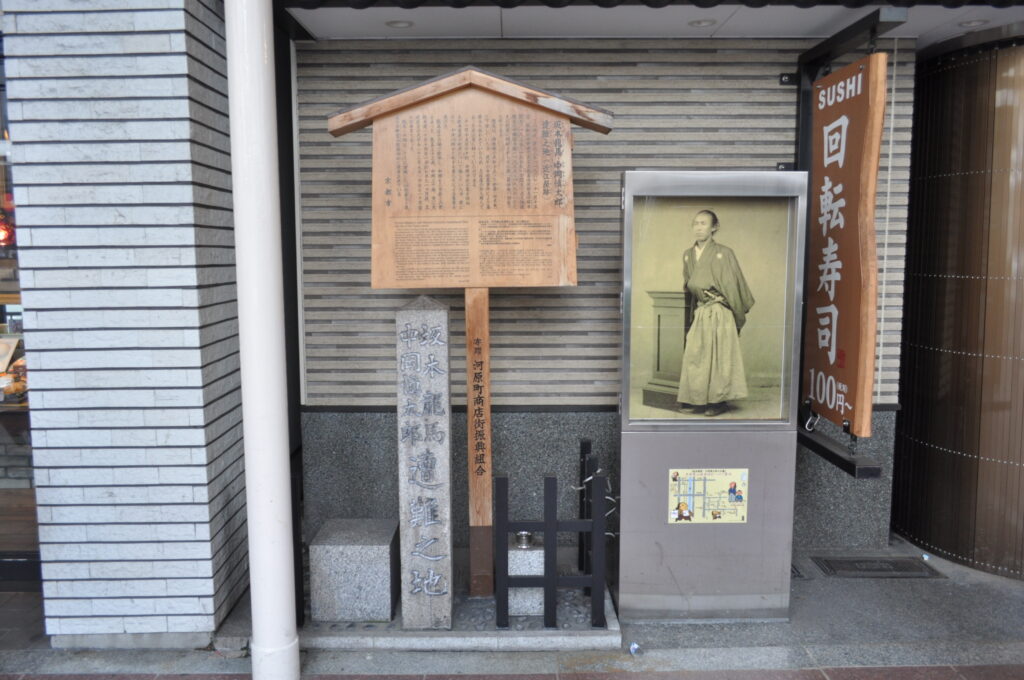
As previously mentioned, Sakamoto Ryoma was assassinated in Kyoto at Omiya by unknown assailants. This assassination remains one of the greatest mysteries of the Bakumatsu period, continuing to intrigue many people. Here, we introduce some of the main suspects.
Kyoto Mimawarigumi Theory
The most widely accepted theory is that the Kyoto Mimawarigumi was responsible. This theory gained traction after Noboru Imai, a Mimawarigumi member, confessed in the early Meiji period. Imai stated that he, under the orders of Sasaki Tadasaburo, along with Yoshitaro Watanabe, Anjiro Takahashi, Hayanosuke Katsura, Nakazo Dohi, and Daisaburo Sakurai, attacked and assassinated Ryoma. This testimony was later included in documents such as the “Ishin Tosa Kinno-shi” and the “Sakamoto Ryoma Related Documents,” and has been widely accepted.
Shinsengumi Theory
Initially, Sazen Teramura, a senior official of the Tosa Domain, and the Goryo Eji believed that the Shinsengumi were responsible. This theory is based on the relationship between the Shinsengumi and Ryoma at the time, and the Shinsengumi’s activities in Kyoto. However, the Shinsengumi members denied their involvement, and no decisive evidence was found, leaving doubts about the credibility of this theory.
Kishu Domain Samurai Retaliation Theory
Another theory suggests that samurai from the Kishu Domain sought revenge due to the conflict between the Kaientai and the Kishu Domain during the “Iroha-maru Incident.” Mutsu Munemitsu (Mutsu Yonosuke) of the Kaientai believed that the Kishu Domain samurai held a grudge from this incident, motivating the attack.
Satsuma Domain Conspiracy Theory
There is also a theory that pro-armed overthrow factions within the Satsuma Domain plotted Ryoma’s assassination due to his push for a bloodless restoration. This theory is based on Ryoma’s political stance, which opposed the Satsuma Domain’s intentions. However, evidence is limited, and it is not widely supported in the historical community.
Other Theories
Other theories suggest that Ryoma’s assassination was due to personal grudges or conspiracies from different factions, as he made many enemies through his activities.
In summary, the assassination of Sakamoto Ryoma is shrouded in mystery, with many potential suspects reflecting the political chaos and complex human relationships of the time. Each theory has its own basis, but no conclusive determination has been made, leaving the truth buried in the shadows of history.
Sakamoto Ryoma’s Personality
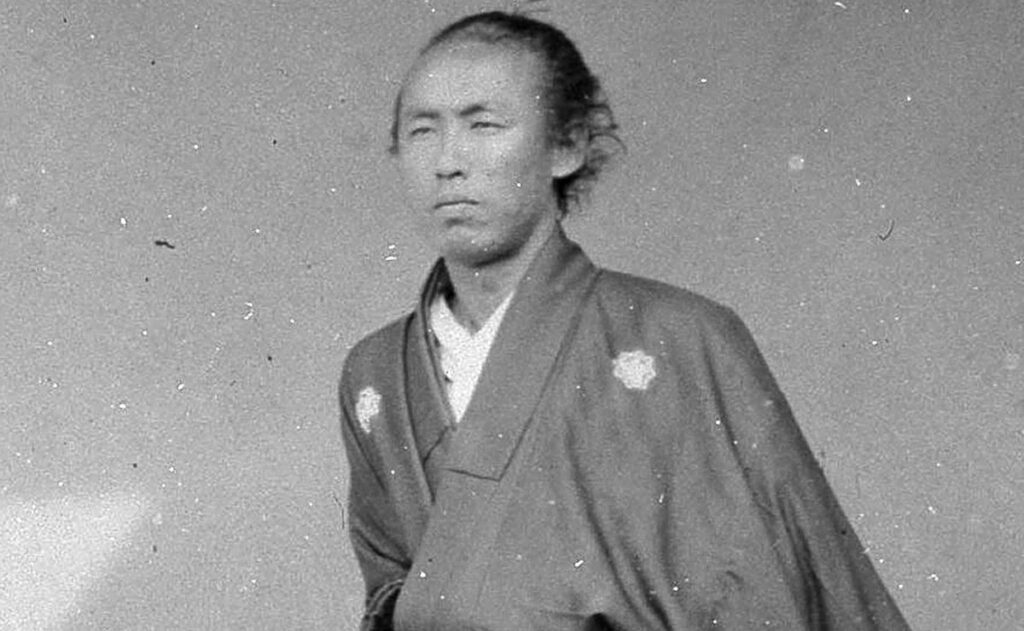
Sakamoto Ryoma had an exceptional personality that enabled him to connect numerous key figures, such as in the formation of the Satsuma-Choshu Alliance and the establishment of the Kaientai. His remarkable communication skills and ability to win people over stemmed from his understanding of others’ interests and preferences, showing interest based on that understanding to elicit their goodwill. Always smiling, generous, and considerate, Ryoma was well-liked by many. His charming personality is evident in the fact that he maintained connections with people from his home domain even after leaving the Tosa Domain, without being regarded as a traitor.
Ryoma was also flexible, willing to ask for guidance on things he did not know, as shown by his words, “Abandoning the notion of shame, one can achieve great things.” This indicates his willingness to learn and grow without feeling ashamed of his ignorance. He believed that to catch up with the world, Japan needed to modernize, which required overthrowing the shogunate. His forward-thinking nature is also evident in his establishment of Japan’s first joint-stock company and his high receptivity to new ideas.
Additionally, his famous words, “Let people say what they will. Only I know what I do,” underscore the importance of following one’s own beliefs without being swayed by others’ opinions. Ryoma attracted and influenced many people through his convictions and strong relationship-building abilities.
Episodes from Sakamoto Ryoma’s Life
Lastly, let’s look at some episodes from Sakamoto Ryoma’s life, which are essential to understanding his character.
A Bedwetter and a Crybaby Bullied in His Childhood
Ryoma’s childhood reveals an unexpected side of the great hero who later changed Japan’s history. He had the peculiar habit of urinating at the entrance of any friend’s house he visited, showing his unique personality.
Moreover, the fact that he wet the bed until the age of 13 is a surprising contrast to the image of the brave leader of the Kaientai. Being a crybaby and bullied also highlights the challenges and transformations in his early years. Although he entered a private school for learning, he was expelled for being a crybaby, showing a somewhat awkward yet endearing character.
Popular with Women and Had Numerous Relationships
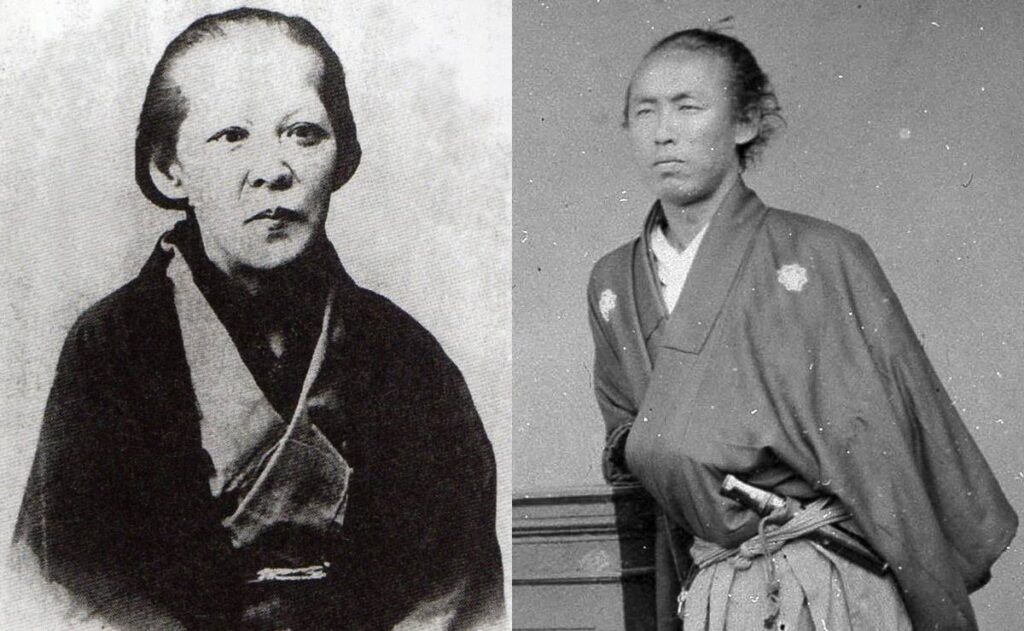
The charming personality and excellent communication skills of Sakamoto Ryoma contributed not only to the formation of the Satsuma-Choshu Alliance and the establishment of the Kaientai, but also to his popularity with many women. Several notable episodes highlight his relationships with women. Official records mention three women: Kato Hirai, Chiba Sana, and his wife, Narasaki Ryo (Oryo). Besides them, there are numerous testimonies from women who claimed to have been “embraced” by Ryoma or expressed a desire to be. These episodes reveal how much of a “popular man” Ryoma was in his time.
Kato Hirai
Although there are not many detailed accounts of his relationship with Kato Hirai, their rumored affair symbolizes Ryoma’s charming personality.
Chiba Sana
Particularly notable is his relationship with Chiba Sana. She was from the prestigious Chiba Dojo, renowned for its swordsmanship, and is said to have had deep affection for Ryoma. The fact that she remained unmarried for life after Ryoma’s death is a testament to the strong feelings she had for him.
Narasaki Ryo (Oryo)
The most important woman in his life was his official wife, Narasaki Ryo (Oryo). They married in 1864, and Oryo supported him throughout his life. Even after his death, she is known for continuing his legacy. Their marriage life also reflects Ryoma’s human appeal.
Escaping the Teradaya Incident Thanks to His Wife’s Quick Thinking, Leading to Japan’s First Honeymoon
Sakamoto Ryoma was involved in many historical events during the turbulent Bakumatsu period, with the “Teradaya Incident” being particularly famous. This incident occurred when Ryoma, posing as a Satsuma domain samurai, was staying at the Teradaya inn in Kyoto with Chofu domain samurai Sanko Mito. One night, about 30 agents from the Fushimi Magistrate’s office surrounded the inn with the intention of capturing or assassinating them.
In this dire situation, Ryoma’s wife, Narasaki Ryo (known as Oryo), gave a timely warning. Ryoma fought back with a pistol gifted by Takasugi Shinsaku, while Sanko Mito used a spear. Though they were both injured, they managed to escape thanks to Oryo’s quick thinking, hiding in a nearby lumber shed to avoid capture.
After this incident, Ryoma and his newlywed wife Oryo traveled to Kagoshima’s hot spring town for recuperation. This trip became known as Japan’s first honeymoon, demonstrating the depth of their marital bond and marking the beginning of the tradition of honeymoon travel in Japan.
Always Carrying a Pistol
Ryoma was known for his love of new things. One notable example is that, despite being a samurai, he preferred modern firearms such as pistols over traditional Japanese swords. He is said to have used two pistols: one gifted by Takasugi Shinsaku and one he purchased himself. These were carried for self-defense by both him and his wife, Oryo. Ryoma famously stated, “The era is the gun. Swords are useless before guns,” demonstrating his proactive adoption of new technologies and weapons.
Conclusion
What did you think? We have introduced the Satsuma-Choshu Alliance orchestrated by Sakamoto Ryoma, his mysterious assassination, his character, and notable episodes. The rapid modernization of Japan from the arrival of the Black Ships to the peaceful restoration of imperial rule would not have been possible without Ryoma. His excellent communication skills, ability to involve many key figures, and passion for modernizing Japan make him a symbol of the turbulent Bakumatsu period and ensure he is remembered as a significant historical figure.
Our site features various other articles on Japanese history and culture beyond Sakamoto Ryoma. We hope you find them interesting and enjoyable!



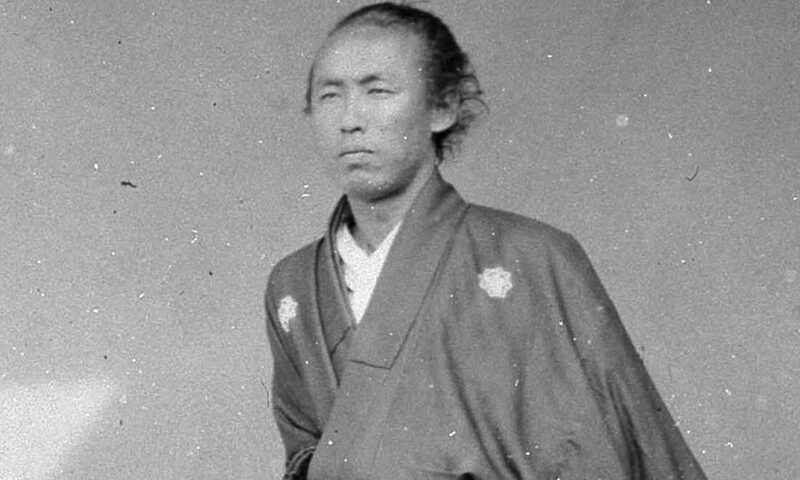
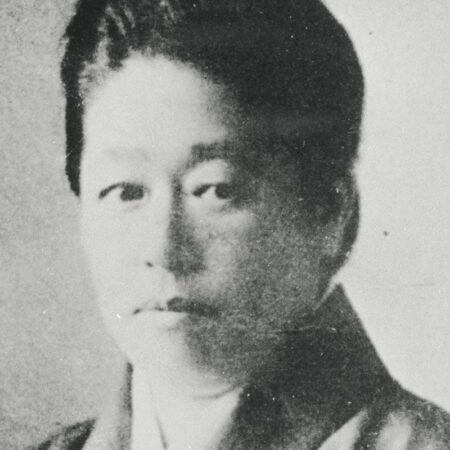
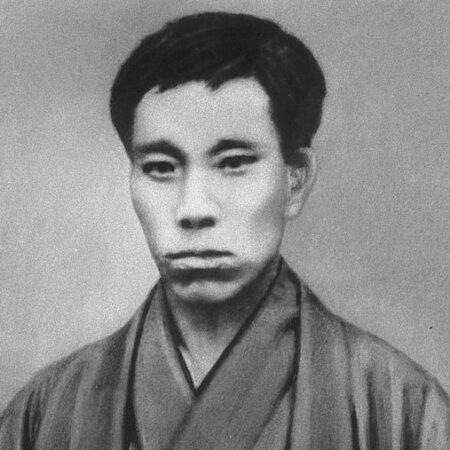
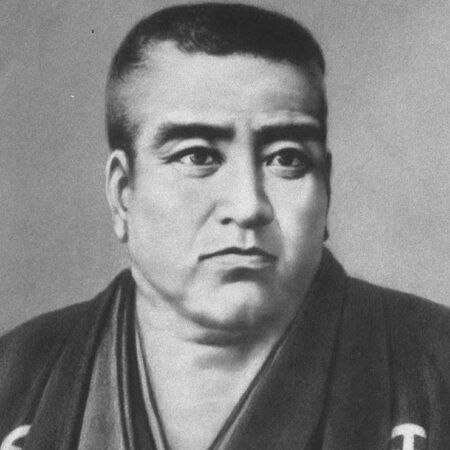
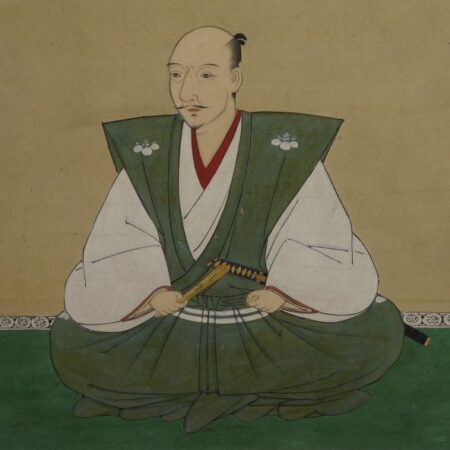
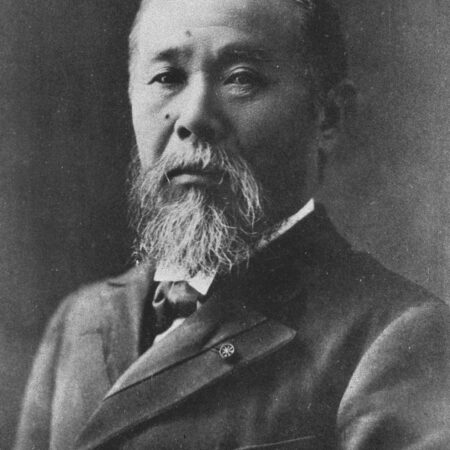
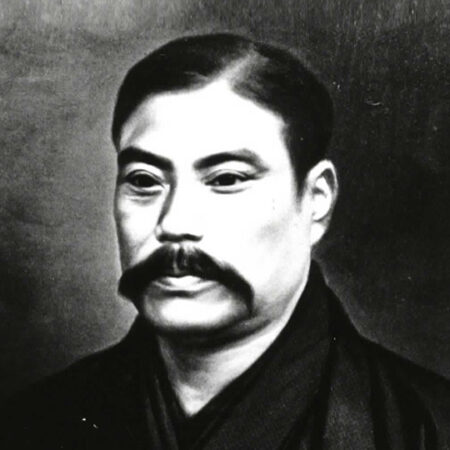
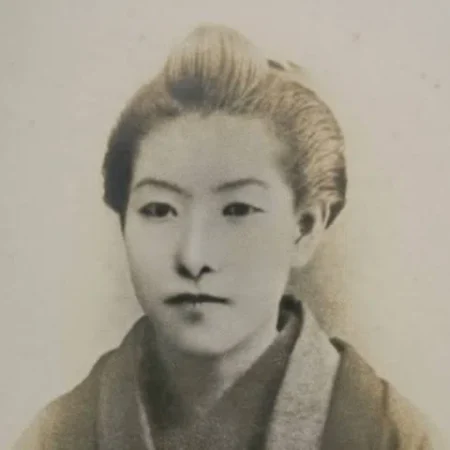
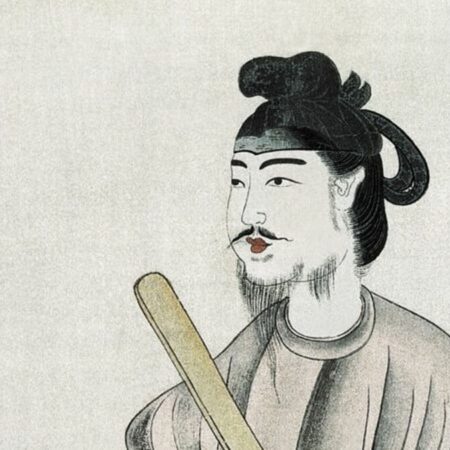



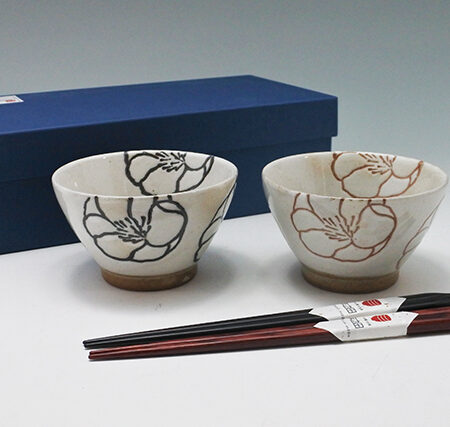
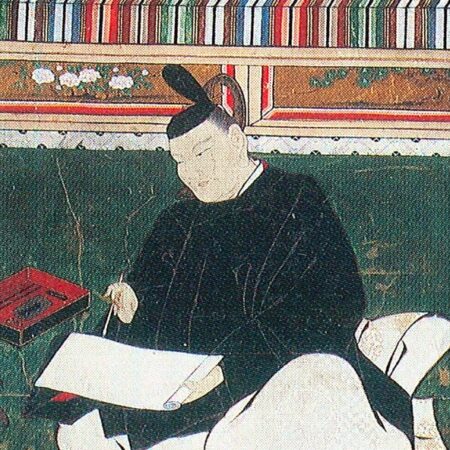
コメント